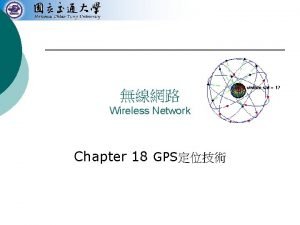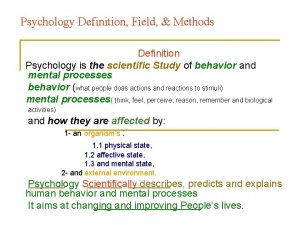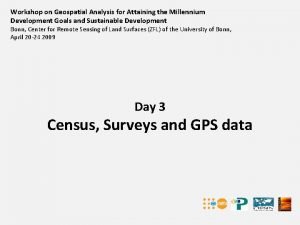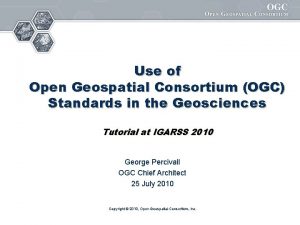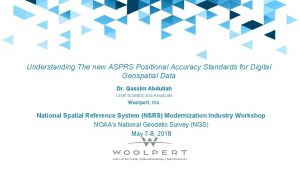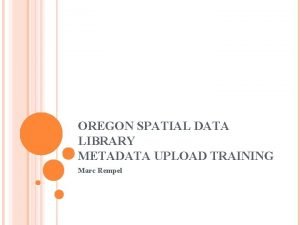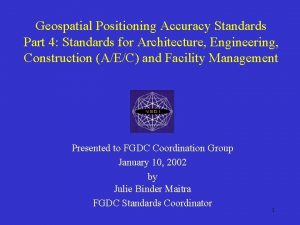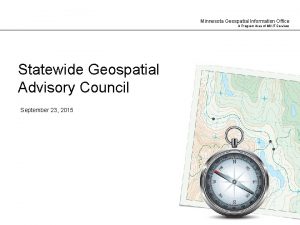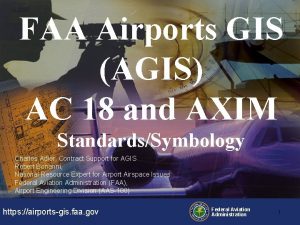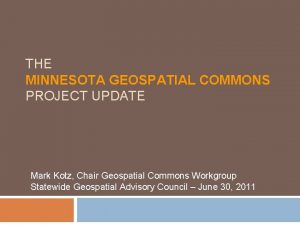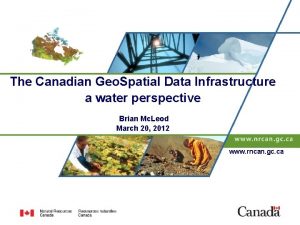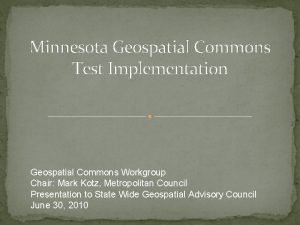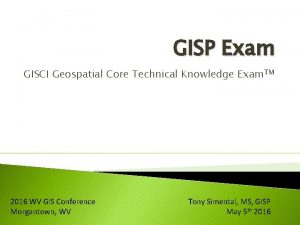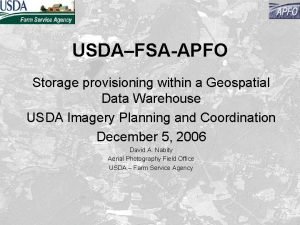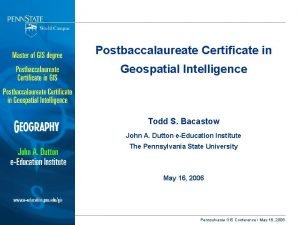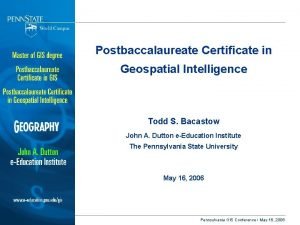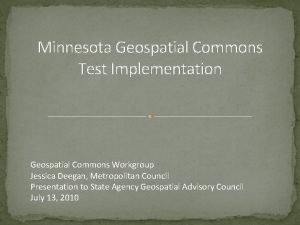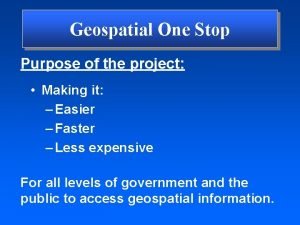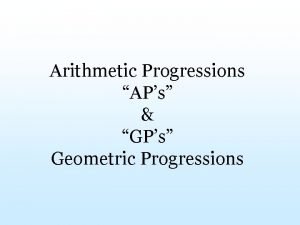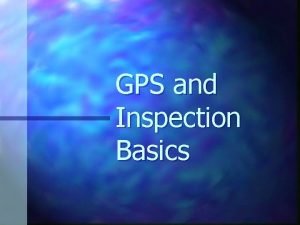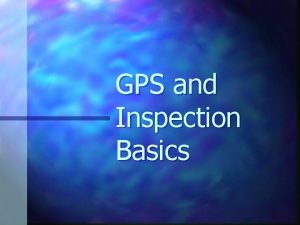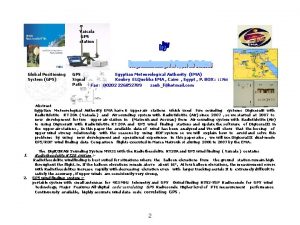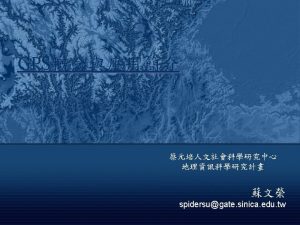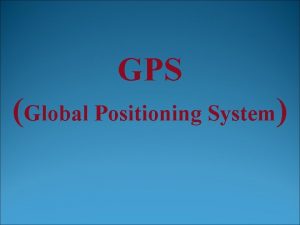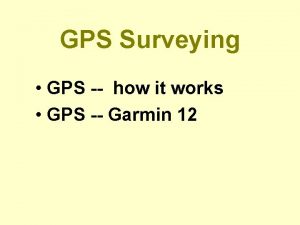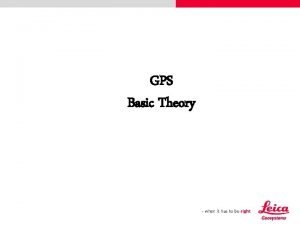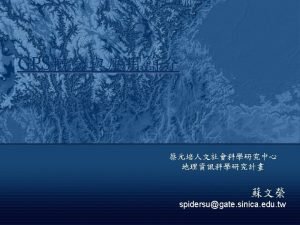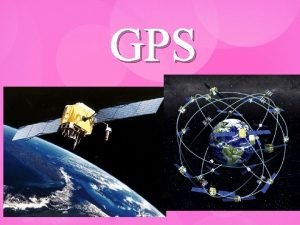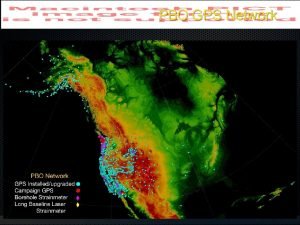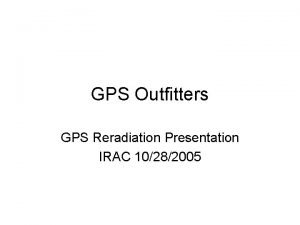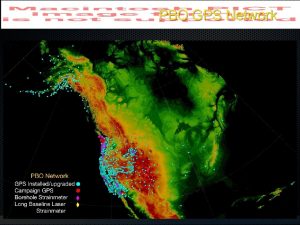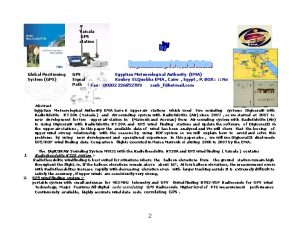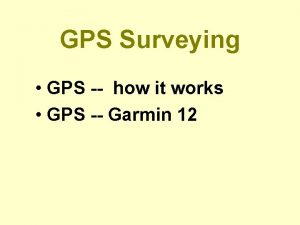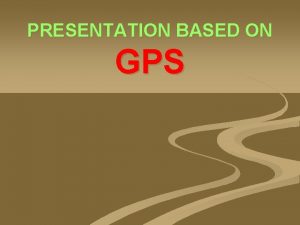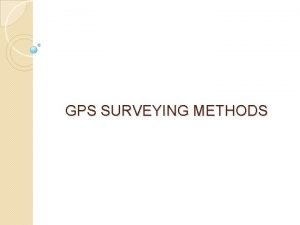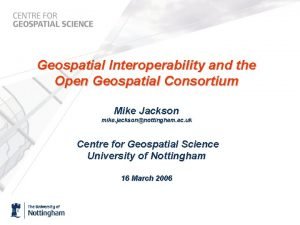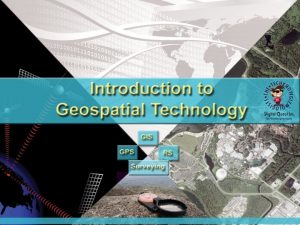Field Methods in Geospatial Science I GPS and















































- Slides: 47

Field Methods in Geospatial Science I: GPS and GIS tools (BOT 4810/5810, Section 200)

Overview Part 1: Global Positing System • • • Introduction to Global Positioning System Segments of the GPS how does GPS works Problems with the GPS Advancements in the GPS Part 2: GIS Integration • • Hardware and Software Integration of GPS data with GIS systems

How Does GPS Work ? • • • 24+ satellites 20, 200 km altitude 55 degrees inclination 12 hour orbital period 5 ground control stations Each satellite passes over a ground monitoring station every 12 hours

GPS satellite in orbit

Three Segments of the GPS Space Segment User Segment Control Segment Master Station Monitor Stations Ground Antennas

Space Segment

Control Segment US Space Command Cape Canaveral Hawaii Kwajalein Atoll Ascension Is. Master Control Station Diego Garcia Monitor Station Ground Antenna

User Segment § § § § § Military. Search and rescue. Disaster relief. Surveying. Marine, aeronautical and terrestrial navigation. Remote controlled vehicle and robot guidance. Satellite positioning and tracking. Shipping. Geographic Information Systems (GIS). Recreation.

Four Primary Functions of GPS § § Position and coordinates. The distance and direction between any two waypoints, or a position and a waypoint. § Travel progress reports. § Accurate time measurement.

Position is Based on Time Signal leaves satellite at time “T” T T+3 Signal is picked up by the receiver at time “T + 3” Distance between satellite and receiver = “ 3 times the speed of light”

Pseudo Random Noise Code Time Difference Satellite PRN Receiver PRN

What Time is it Anyway? Universal Coordinated Time Greenwich Mean Time GPS Time - 13* Zulu Time Local Time: AM and PM (adjusted for local time zone) Military Time (local time on a 24 hour clock) * GPS Time is currently ahead of UTC by 13 seconds.

Signal From One Satellite The receiver is somewhere on this sphere.

Signals From Two Satellites

Three Satellites (2 D Positioning)

Triangulating Correct Position

Three Dimensional (3 D) Positioning

Selective Availability (S/A) Ø Ø The Defense Department dithered the satellite time message, reducing position accuracy to some GPS users. S/A was designed to prevent America’s enemies from using GPS against us and our allies. In May 2000 the Pentagon reduced S/A to zero meters error. S/A could be reactivated at any time by the Pentagon.


Sources of GPS Error • Standard Positioning Service (SPS ): Civilian Users Source Amount of Error Satellite clocks: Ø Orbital errors: Ø Ionosphere: Ø Troposphere: Ø Receiver noise: Ø Multipath: Ø Selective Availability Ø User error: Ø 1. 5 to 3. 6 meters < 1 meter 5. 0 to 7. 0 meters 0. 5 to 0. 7 meters 0. 3 to 1. 5 meters 0. 6 to 1. 2 meters (see notes) Up to a kilometer or more • Errors are cumulative and increased by PDOP.

Sources of Signal Interference Earth’s Atmosphere Solid Structures Metal Electro-magnetic Fields

Receiver Errors are Cumulative! System and other flaws = < 9 meters User error = +- 1 km

Using GPS Receivers for Positioning and Navigation

GPS Navigation Terminology Active GOTO Waypoint N (0000) (CMG) (xº) XTE Di st a Be po in to g rin ) ce N (00) 0 (X W ay Le e v ti an Ac t g Desired Track (DTK) (xº) ) I (CD er ) v O OG d ee nd (S p S ou Gr Course Made Good (CMG) Active From Waypoint Tracking (TRK) (xº) Present Location

GPS Navigation: On the Ground N Bearing = 650 COG = 50 XTE = 1/2 mi. Active GOTO Waypoint Bearing = 780 COG = 3500 XTE = 1/3 mi. tiv c A g e e. L Bearing = 400 COG = 1040 XTE = 1/4 mi. Location Where GOTO Was Executed Course Over Ground (COG) = Bearing = Cross Track Error (XTE) =

Position Fix § § § § A position is based on real-time satellite tracking. It’s defined by a set of coordinates. It has no name. A position represents only an approximation of the receiver’s true location. A position is not static. It changes constantly as the GPS receiver moves (or wanders due to random errors). A receiver must be in 2 D or 3 D mode (at least 3 or 4 satellites acquired) in order to provide a position fix. 3 D mode dramatically improves position accuracy.

Waypoint § § § A waypoint is based on coordinates entered into a GPS receiver’s memory. It can be either a saved position fix, or user entered coordinates. It can be created for any remote point on earth. It must have a receiver designated code or number, or a user supplied name. Once entered and saved, a waypoint remains unchanged in the receiver’s memory until edited or deleted.

Planning a Navigation Route Start = Waypoints

How A Receiver “Sees” Your Route Blue circles: the potential circle of GPS error at each waypoint. Yellow stars: where you want to go. Green stars: where the GPS receiver may take you.

GPS Waypoint Circle of Error X

GPS Dilution of Precision and Its Affects On GPS Accuracy

GPS Satellite Geometry § § § Satellite geometry can affect the quality of GPS signals and accuracy of receiver trilateration. Dilution of Precision (DOP) reflects each satellite’s position relative to the other satellites being accessed by a receiver. There are five distinct kinds of DOP. Position Dilution of Precision (PDOP) is the DOP value used most commonly in GPS to determine the quality of a receiver’s position. It’s usually up to the GPS receiver to pick satellites which provide the best position triangulation. More advanced GPS receivers can filter out poor DOP values.

Ideal Satellite Geometry N E W S

Good Satellite Geometry

Poor Satellite Geometry N W E S

Poor Satellite Geometry

Differential GPS Ø Realtime Ø Post process

Real Time Differential GPS x+5, y-3 x+30, y+60 x-5, y+3 Receiver DGPS correction = x+(30 -5) and y+(60+3) DGPS Site True coordinates = x+0, y+0 True coordinates = x+25, y+63 Correction = x-5, y+3

USCG NDGPS Ground Stations National Differential Global Positioning System Yellow areas show overlap between NDGPS stations. Green areas are little to no coverage. Topography may also limit some areas of coverage depicted here.

USCG NDGPS Ground Stations National Differential Global Positioning System Yellow areas show overlap between NDGPS stations. Green areas are little to no coverage. Topography may also limit some areas of coverage depicted here.

Wide Area Augmentation System GPS Constellation Geostationary WAAS satellites WAAS Control Station (West Coast) Local Area System (LAAS) WAAS Control Station (East Coast)

How good is WAAS? With Selective Availability set to zero, and under ideal conditions, a GPS receiver without WAAS can achieve fifteen meter accuracy most of the time. * +-15 meters +3 meters Under ideal conditions a WAAS equipped GPS receiver can achieve three meter accuracy 95% of the time. * * Precision depends on good satellite geometry, open sky view, and no user induced errors.

Instantaneous positioning with GPS Accuracy of • +/- 10 m (30 ft) error (horizontal) • +/- 15 m (45 ft) error (vertical) Your location is: xxo xx. xxx’ N xxo xx. xxx’ W

High-precision GPS N D Dl -Use the carrier phase, not pseudorange -Dual-frequency receivers (to remove ionosphere) -High-precision orbital information -Good monuments -Multiple stations (to remove satellite clock variations) -Sophisticated processing software -Collect lots of data

GPS Applications Timing Roads & Highways Space Aviation Agriculture Marine Rail Environment Public Safety & Disaster Relief Surveying & Mapping Recreation

Further Reading Elementary http: //www 8. garmin. com/gpsacademy/ http: //www. trimble. com/gps/index. html Novice http: //www. colorado. edu/geography/gcraft/notes/gps_f. html Expert http: //www. gmat. unsw. edu. au/snap/gps_survey/principles_gps. htm Source materials: Wikipedia, Charlie Leonard, IIRS….

Part 2: GIS Integration • • Hardware and Software Integration of GPS data with GIS systems
 Gps gps gps
Gps gps gps How does gps work
How does gps work Eric’s favourite .......... is science. *
Eric’s favourite .......... is science. * Gauss law in magnetism
Gauss law in magnetism Q factor of capacitor
Q factor of capacitor Data types and field properties
Data types and field properties Field dependent and field independent
Field dependent and field independent Difference between electric field and magnetic field
Difference between electric field and magnetic field Metal coping fpd
Metal coping fpd Field methods in psychology
Field methods in psychology Individual differences factors
Individual differences factors Field dependent vs field independent
Field dependent vs field independent Waveguide cutoff frequency
Waveguide cutoff frequency Millennium geospatial
Millennium geospatial Open geospatial consortium standards
Open geospatial consortium standards Asprs accuracy standards for digital geospatial data
Asprs accuracy standards for digital geospatial data Oregon spatial data library
Oregon spatial data library Geo business intelligence
Geo business intelligence Geospatial world forum amsterdam
Geospatial world forum amsterdam Geospatial positioning accuracy standards
Geospatial positioning accuracy standards Geospatial data definition ap human geography
Geospatial data definition ap human geography Minnesota geospatial commons
Minnesota geospatial commons Minnesota geospatial commons
Minnesota geospatial commons Faa agis
Faa agis Bcc geospatial center of the cuny crest institute
Bcc geospatial center of the cuny crest institute John williams mit
John williams mit Geo portal
Geo portal Canadian geospatial data infrastructure
Canadian geospatial data infrastructure Minnesota geospatial commons
Minnesota geospatial commons Gisci geospatial core technical knowledge exam
Gisci geospatial core technical knowledge exam Gis definition ap human geography
Gis definition ap human geography Mdoq
Mdoq Geospatial intelligence certificate online
Geospatial intelligence certificate online Geospatial
Geospatial Geospatial intelligence certificate
Geospatial intelligence certificate Minnesota geospatial commons
Minnesota geospatial commons Marine geospatial ecology tools
Marine geospatial ecology tools Geospatial intelligence
Geospatial intelligence Marine geospatial ecology tools
Marine geospatial ecology tools Geospatial one stop
Geospatial one stop Qualitative research methods in political science
Qualitative research methods in political science Scientific methods in computer science
Scientific methods in computer science Methods of science lesson 1
Methods of science lesson 1 Research methods in exercise science
Research methods in exercise science Aps and gps
Aps and gps Anthropology vs sociology
Anthropology vs sociology Science fusion online
Science fusion online Hard and soft science
Hard and soft science
